Cuba’s socio-economic landscape is complex. The ongoing economic situation means that many everyday items are not easily accessible. Things like toiletries, medicines, and electronics will be harder to find or more expensive than anticipated.
The Cuban Government also requires you to bring some documentation you may need to obtain before flying to the country. On top of that, you will have to deal with the country’s scarce infrastructure, which limits basic services (Internet, ATMs, etc.).
This article will teach you how to pack strategically for Cuba. We compiled the most complete list of things to bring to Cuba, including gifts for locals if you want to support them during your trip. We suggest only essential items; things you should take to the island based on our expertise and other travelers’ experiences.
Entry Requirements
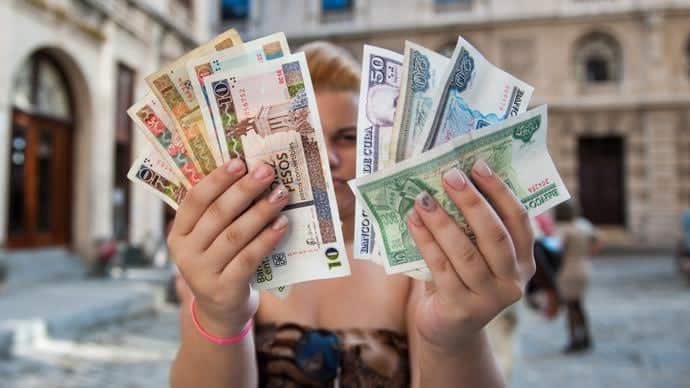
The Cuba Tourist Card (a.k.a Cuban Visa)
An interesting fact about Cuba is that most visitors must obtain a Cuba Tourist Card or Cuba Visa.
You can get the Cuba Tourist from:
- Your airline.
- The Cuban Embassy or Consulate in your country.
- Online on Easy Tourist Card (recommended). They deliver the Cuba visa almost anywhere.
While traveling around the country, please keep it on you so it’s not lost or stolen.
Travel health insurance
Travel health insurance is one of the most important things to bring to Cuba. Not only does the Cuban law require it, but you will be protected.
We analyzed dozens of insurance providers for Cuba and recommend Insubuy, which offers plans starting at 8 USD per week per person.
Sanitary Statement and Customs Declaration
Everyone traveling to Cuba must also fill out the Sanitary Statement for Travelers (Declaración de Sanidad del Viajero), a sort of health declaration form. You must also provide the Customs Declaration form.
To save some time and annoyance, complete the required documentation in advance on D’Viajeros, the government’s official site.
Clothing
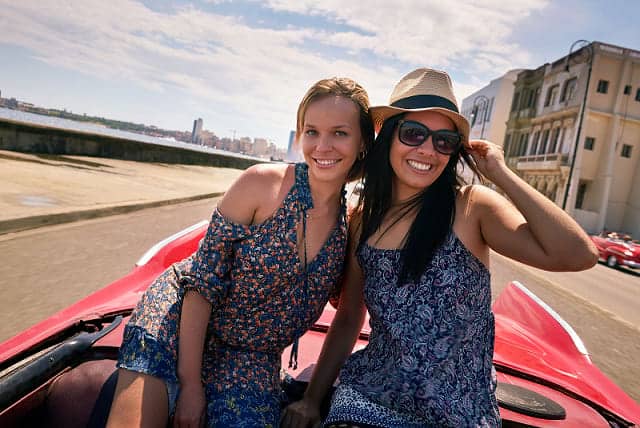
While the island’s landscape differs depending on where you’re staying, the climate is similar throughout. It’s usually quite hot.
In general, pack mostly lightweight clothing suitable for sweating in the sun.
Although Cuba is a safe country to visit, don’t wear too many eye-catching accessories. Consider leaving expensive jewelry at home.
You may wonder what to wear in Cuba for evening events or iconic venues like the Cabaret Tropicana. Well, just bring smart casual clothes, if not overly formal. There is no need to dress up.
However, consider that you can’t wear beach clothes or shorts at most evening venues.
Sunhats
Sunhats offer protection from the sun, which can be brutal in Cuba. They’re also rather fashionable on the island for both men and women.
Sunglasses
Like sunhats, sunglasses will help protect you from too much sunlight. In Cuba, you will really need them.
However, the same line of thinking applies to sunglasses as jewelry. Consider leaving your more expensive pairs at home so they aren’t lost or stolen during your trip. You wouldn’t want them sinking to the bottom of the ocean or anything.
Sneakers
While traveling in Cuba, you’re likely to do a lot of trekking down rather dusty roads. It’s in your best interest to bring along some close-toed walking shoes for those occasions.
Something simple, such as a pair of New Balance tennis shoes for men or women, will work. They will also be suitable if you visit the more mountainous parts of Cuba for outdoor adventure.
Walking sandals
You’ll want to wear a comfortable and stylish pair of walking sandals while perusing shops and other touristy locations in Cuban cities. That’s if you even want to get out of those colorful classic cars in Cuba (tip: you should take a drive!).
KEEN men’s or Teva women’s are relatively inexpensive options that should remain comfortable after a day spent shopping.
Flip-flops or water shoes
When exploring the beautiful Cuban beaches, a simple, cheap pair of flip-flops is essential for both men and women.
Remember that some swimming areas may be a bit rocky, so you may be better off wearing water shoes.
Swimwear
Do I need to remind you that Cuba has some of the best beaches in the Caribbean?
Officially, beaches are a no-no for you if you come from the US, although no one will watch you while on the island. For the lucky rest, don’t forget to pack your swimsuits!
Light jacket or sweater
Bring a light jacket or overshirt to wear at restaurants, buses, and hotels where the air conditioning may be very cold.
Raincoat or umbrella
If you travel during the rainy season, bring a light raincoat or a compact umbrella to protect you from the occasional rain downpours.
Blister bandages
Increased walking in Cuban cities can lead to blisters, especially if you’re not used to the climate or terrain.
Blister bandages will help you prevent foot discomfort. It’s a small addition to your travel kit that can significantly impact your overall experience.
Health and Hygiene
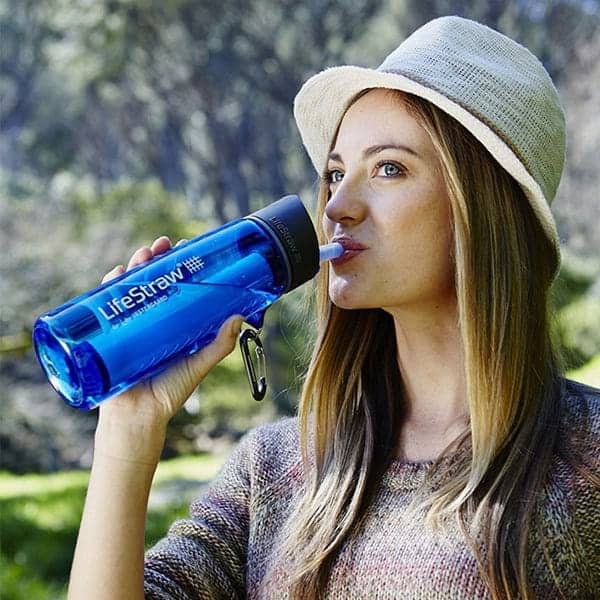
A filtered water bottle
Wait, what? Most people wouldn’t put a water bottle on their list of things to bring to Cuba.
We believe it’s a bad idea to travel without one. Water pollution in Cuba is still terrible. The supply of purified water is also meager.
If you don’t expect to have bottled water all the time, bringing your own filtered water bottle helps to eliminate some of the risks.
Mosquito repellent
Mosquito-borne diseases, such as dengue and Zika, are not uncommon in Cuba.
You must take whatever precautions necessary to repel mosquitoes. A simple bug spray is an essential thing to bring to Cuba. Make sure you use it every day and safely.
Sunscreen
As with all tropical, sun-soaked countries, bringing and wearing appropriate sunscreen is important.
You don’t want to spend your vacation sunburnt and miserable.
Hand sanitizer
Access to soap and water is limited in Cuba, and hygiene standards differ from what you’re accustomed to.
Hand sanitizer is nowhere to be found. As an alternative, locals use hypochlorite when available.
You should bring a pack of hand sanitizer to maintain good hygiene and prevent illnesses from surfaces, food, and interaction with others.
Toilet tissues
Finding toilet paper in Cuba is complicated, except perhaps in high-end tourist facilities.
If you can, bring a travel-size pack of toilet tissues. You will thank us later.
Toiletries
Bringing a toiletries kit to Cuba is essential for several reasons, primarily due to availability and quality. Basic toiletries like shampoo, toothpaste, or deodorant are difficult to find in local stores.
Over-the-counter medicines
In some places, food and water in Cuba can carry diseases like hepatitis A, typhoid, and travelers’ diarrhea.
Although Cuba is praised for having a free healthcare system, the truth is that shortages of basic over-the-counter medicines are not uncommon. Therefore, you should always practice safe food and water precautions while traveling in Cuba.
If you get sick, you will want to have some over-the-counter medicines readily available.
Here are some medications you might consider bringing to Cuba:
- Pain and fever relief: Acetaminophen or ibuprofen can help alleviate pain or reduce fever, whether from headaches, muscle aches, or mild illnesses.
- Antihistamines: especially useful for allergic reactions, insect bites, or mild allergic symptoms.
- Antidiarrheal medication: Imodium or similar drugs can help manage mild cases of traveler’s diarrhea until you can access further medical assistance if needed.
- Motion sickness medication: if you’re prone to motion sickness, bringing medication like Dramamine can be beneficial, especially if you plan to take long drives or boat trips.
- Antacids: for digestive discomfort or heartburn due to changes in diet or unfamiliar foods.
- Basic first-aid items: bandages, antiseptic wipes, gauze, adhesive tape, and antibiotic ointment can help with minor cuts, scrapes, or blisters.
Electronics
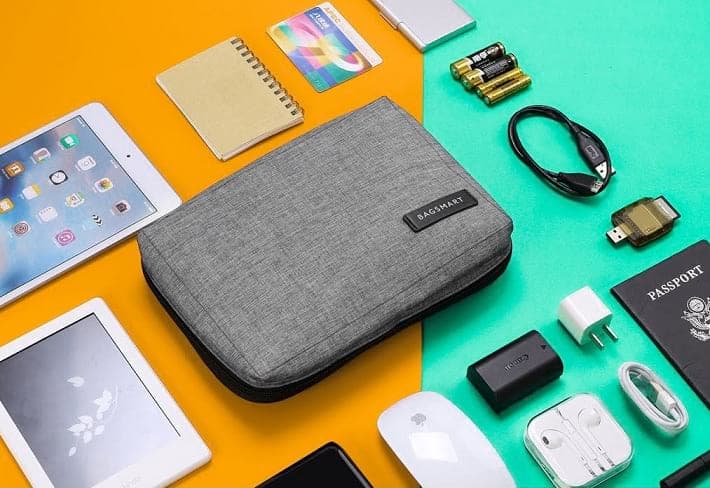
VPN
Considering the country’s unique Internet landscape and restrictions, you should install a VPN on your phone, computer, or tablet.
With a VPN, you can bypass restrictions on certain content and everyday apps.
For example, many US-based websites, especially banking, streaming, and even travel sites, will not work in Cuba.
We recommend NordVPN to mask your IP address and avoid the geo-restrictions. It will also offer enhanced security and privacy while connected to the public Wi-Fi networks in Cuba.
Portable charger
Bringing a portable charger means you are prepared for an emergency. Even if you cannot return to where you’re staying, you can keep your devices charged.
Pin adapter
Cuba uses the same plug types as North America (Type A), which is great for people traveling to Cuba from Canada or the US.
Some outlets also accept European rounded 2-3 prong plugs, depending on where you stay. Please reach out to your hotel or casa particular and ask about it.
To be safe, bring a pin adapter to plug in your electronics.
Touring Around
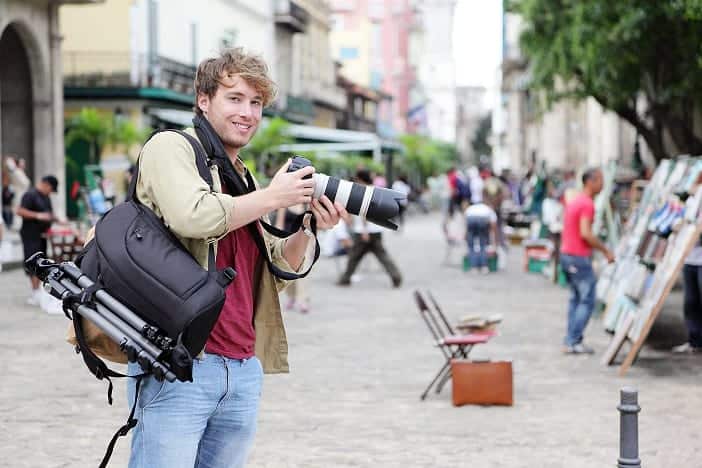
Cash, always cash
Cuba is primarily a cash country. ATMs are old and scattered. Many facilities won’t accept credit or debit cards, especially if issued by American banks.
Therefore, expect to pay most of your trip to Cuba costs in Cuban Pesos. Upon landing on the island, exchange your home currency for CUPs (Cuban Pesos)!
The official place to exchange your money for CUP is called CADECA (Casas de Cambio). You can find them at airports, resorts and hotels, cruise ports, and other tourism facilities across the country.
However, you will be better off selling your home currency in the informal market. Just make sure you trust someone on the island to help you exchange your currency. It could be your host, a hotel staff, or a friend; don’t do it with random people on the street, please.
Travel guide book
There’s certainly no shortage of things to do in Cuba. A travel guide pointing you in the right direction can be helpful, especially if you are backpacking Cuba alone.
Real Havana by Mario Rizzi promises to guide you away from the tourist traps and enjoy Cuba as Cubans do. You can also read our ultimate guide to the best Havana attractions.
Spanish-English phrasebook
Unless you are fluent in Spanish, a Spanish-English dictionary or phrasebook is a no-brainer.
Carrying one of these around will be incredibly helpful in communicating with Cubans, whether you have a simple question or need help in an emergency.
What to Bring to Cuba for Locals
Certain items that may be readily available and inexpensive in your home country may be hard to come by in Cuba. Many Cubans spend hours in long lines at stores to buy essential products you may take for granted, such as toothpaste, toilet paper, and painkillers.
Inflation, low wages, and shortages of almost everything have made it difficult for Cubans to access food, medicine, and other basic goods. Therefore, bringing a thoughtful gift will show your appreciation and meet your host’s vital needs.
That said, please don’t give gifts to everyone on the streets. It’s inappropriate and unsafe. Bring gifts to friends, some hotel staff (don’t forget to tip them!), your casa particular or Airbnb host, and other locals you have emotionally connected with.
Also, be mindful of any items the Cuban authorities may consider offensive or subversive. You don’t want to get your hosts into trouble!
Here are some ideas for gifts you can bring to Cuba:
- Clothing, shoes, flip-flops, and accessories.
- Hygiene products: toothbrushes and toothpaste, shampoo and conditioner, soap, deodorant, toilet paper, and other female hygiene products.
- Medicines: aspirin, ibuprofen, anti-diarrhea pills, band-aids, and vitamins.
- Sheets, pillowcases, and towels.
- Sweets: chocolate, candies, chewing gum.
- School supplies and toys for kids: pencils, pens, coloring books, notepads, crayons, action figures, puzzles, balls, etc.
- Electronics accessories: flash drive sticks, SD cards, old tablets or cell phones, used cameras, batteries, power banks, charging cables, and USB chargers.
- Non-perishable food: canned goods, peanut butter, dry soups, jelly, coffee, cereals, granola bars, powdered milk, etc.
Essential personal items you leave behind after your trip may also be appreciated.
Cuban Import Regulations
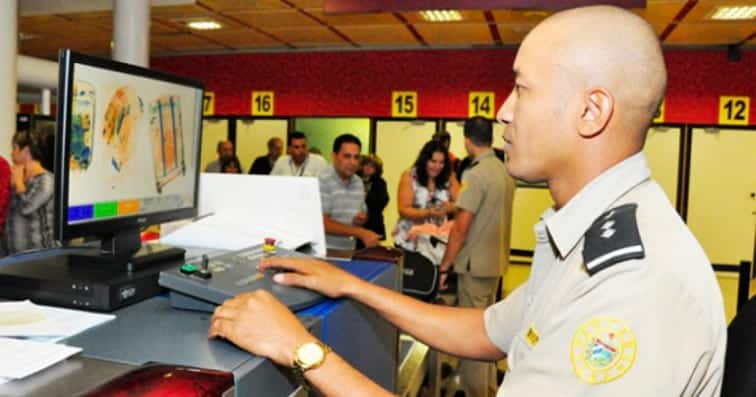
Please read the Cuban import regulations and the FAQ page on the official Cuban Customs website. They explain what you can legally bring to Cuba.
For example, you can’t enter any of the following items into the island:
- Certain products and by-products of plant and animal origin.
- Narcotics.
- Walkie-talkies.
- Stand-lone GPS devices.
- Weapons.
The Complete Packing List to Cuba
Here is the full list of things to pack for Cuba. Review it, cross off the items you already have, and pack it up!
- Cuban Tourist Card (Cuba Visa)
- Travel health insurance
- Traveler Sanitary Statement
- Sunhats (Our picks: Brooklyn Men’s Straw Sun Hat and C.C Women’s Sun Hat)
- Sunglasses
- Sneakers (Our picks: New Balance Men’s 990v4 and New Balance Women’s FuelCore Nergize V1 Cross Trainer)
- Walking sandals (Our picks: KEEN Men’s Newport and Teva Women’s Tirra Athletic Sandal)
- Flip-flops or water shoes
- Swimwear
- Light jacket or overshirt
- Raincoat or umbrella
- Blister bandages
- Water filter bottle
- Mosquito repellant
- Sunscreen
- Hand sanitizer
- Toilet tissues
- Toiletries
- Over-the-counter medicines (Acetaminophen, ibuprofen, antihistamines, Imodium, Dramamine, antacids, and basic first-aid items)
- NordVPN
- Portable charger
- Pin adapter
- Power adapter
- Travel guide book
- Spanish-English phrasebook
- Gift for locals (items that are hard to get in Cuba)
Cuba is a wonderful destination. You’ll want to ensure you have everything you need to enjoy all the island offers. Hopefully, our guide on what to bring to Cuba will help you achieve just that.
Feel free to share your thoughts below, and share this packing list for Cuba if you enjoyed it!

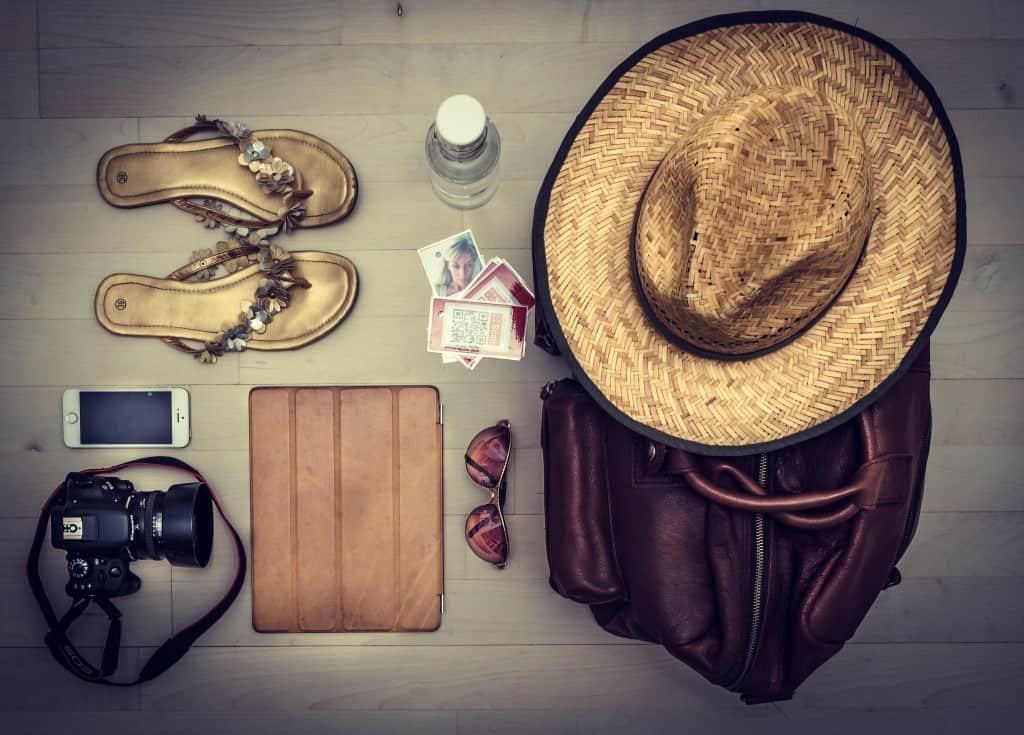

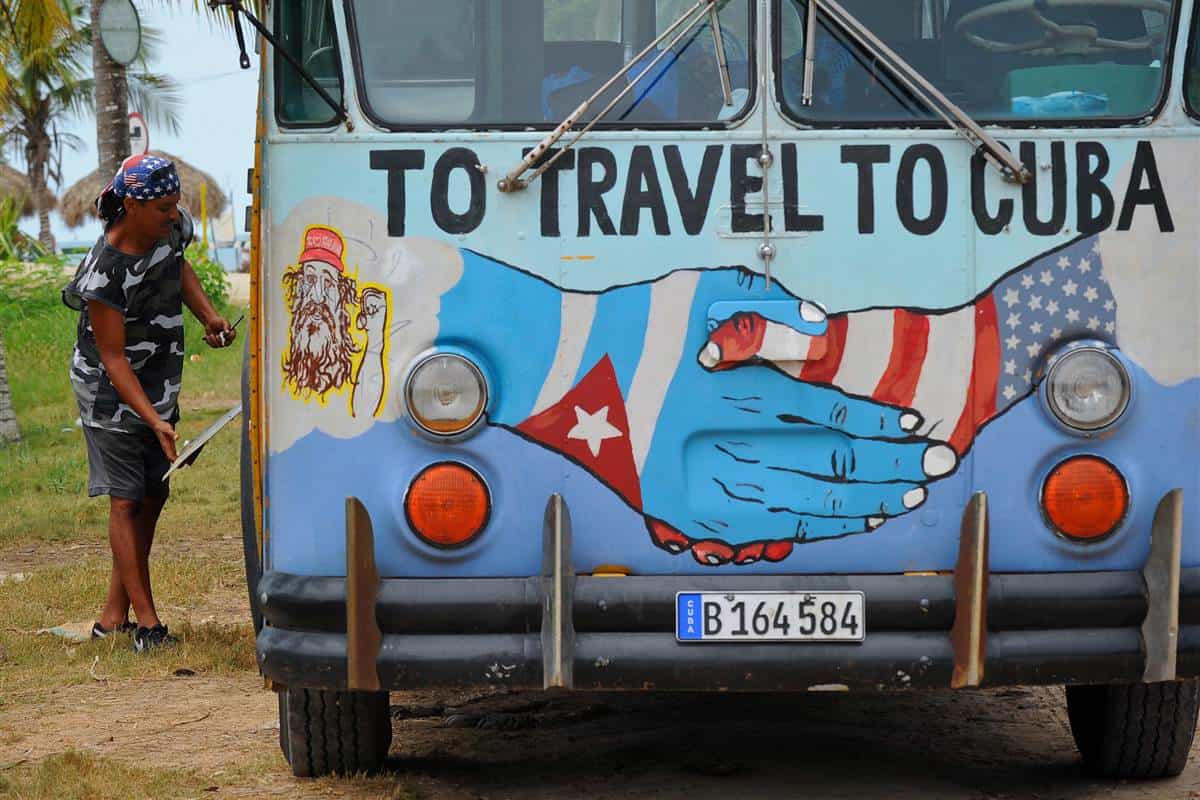

Thanks for the great list. Heading to Veradaro later this month- are food shortages affecting tourist resorts? Should we bring non perishables / snacks?!?
I was wondering if nail polish and mascara would be good items to bring along with tooth paste and tooth brush.
Hello we are visiting friends near Havana I Would like to bring them a small portable sewing machine and a few spools of thread is this allowed?
I only exchange $100 to CUP, most of the stuff you can pay in USD in Cuba. Ex. Restaurants they’ll indicate two amounts, CUP and USD. USD amount is the blackmarket conversion. Same with local Gift shops they appreciate it more if you pay them USD and they convert with the current blackmarket rates which is higher than the official conversion.
You say that bring them a gift they normally don’t have in Cuba., but I don’t know what Cuba is short of other then food, and clothes
All types of toiletries and medicine such as pain/ fever relief, kids medicine can be added to the list
You mention bringing canned good and other food items to Cuba. There is no issue at Cuban Customs bringing these items in?
Thank you…
I would like to know what currency people use to tip. I get it that Canadian currency is accepted, but because we don’t have a 1$ bill only a coin, I have read it’s not accepted. Should I than take a bunch of US $1 bills for tipping ?
Hi Lea,
Yes, you can tip in USDs. Please, read our guide to tipping in Cuba.
I’ve just returned from Veradero and saw tips in toonies & loonies. The staff said they accept those as well as Euros then they exchange it with travellers or the Cambio currency in the resort. Hope that helps. Plenty of Canadians visitors.
Great tips, DoubleOO. Thanks for sharing!
Cash is great, but Cubans will appreciate receiving everyday items that are difficult or expensive to obtain, such as toothpaste, tampons, soap, and even clothing.
I am a dual citizen PL/USA but after reading through your
website, I understand that I am bound by my American citizenship no matter what when travelling to Cuba.
I am a Spanish teacher and I would like to learn more a culture so the category “supporting people” would work for us for the couple days we are in Havana, then we are planning to go to Varadero and sail for a week. We will hire Cubans to help as sail/cook and would that qualify? I see that Varadero Marina is on the prohibited list of buisnesses by Dept. ot State of USA.
Thank you for clarify it for me, sending best wishes!
Hi Mirka,
Having a full-time itinerary (6-8 hours) supporting private businesses should qualify for the Support for the Cuban People category. However, please notice that we are not able to provide any legal advice. Hope you understand.
Hello, I am fully vaccinated. I understand I need a negative per test to come into Cuba. What about coming home to Canada? Is there a place to get the test in Cuba and what is the cost? Thank You
hello, i have the 2 COVID vaccines and the booster and 10 days ago i got covid, hence i have a recovery certificate. Do i still need to have a negative PCR? the reason is that sometimes the PCR can be positive even after 1 month,,,and we are travelling in 1 week..Thank you!
Hi Ioanna,
According to the latest Covid-19 regulations in Cuba, you still need to present a negative PCR test.
The Cuban travel website mentions that we do not need a negative PCR test to get there. Is this true? I’ve also called Sunwing multiple times and they’ve said every single time that I don’t need one but why does this article say that we need one?
Hi V,
As of January 5, 2022, all travelers present a negative PCR test result taken within 72 hours from the arrival date, regardless of vaccination status. Please, check out our updated guide to the current Cuba travel restrictions.
If you have a Visa bank Card that can be used as a ATM card through my bank Wells Fargo. Is that going to be a problem? For a 5 day stay would 2000 be sufficient in us currency? Thank you
Hi Miguel,
Unfortunately, in Cuba, you won’t be able to use credit cards that were issued by American banks. To learn more about using money in Cuba, check out our guide to the Cuban currency and budget tips for Cuba.
great
Is there a beer shortage right now in Cuba (Guardalavaca area) ?
Hi Jimmy,
We are not aware of any shortage in Guardalavaca these days.
Havana shopping. Besides your typical souvenir shops, there are flea markets and antique shops. However, I have heard there are restrictions on what you can take out of Cuba. Any idea where I can find something comprehensive? I would hate to buy some old books or antique/vintage ceramics or crystal and find I have to leave it at the airport.
Thanks in advance
Hi Brett,
You shouldn’t have any issue taking out books and souvenirs as long as they are not valuable objets d’art. Here are two clarifying articles about it from the Cuban Customs:
Allowed and not allowed articles.
Article subjected to export requirements.
Be sure to take cash , Canadian or U.S. . We just returned from Caso Santa Maria and most time the internet was down.
at the Bank to get Cuban currency
Hello! Thank you for these comprehensive guides. I’m confused about the microfiber towels you suggest. Are there not towels provided at hotels and resorts? Or are these for another purpose I’m just not thinking of? Thanks!
Hi EB,
Hotels and resorts do provide you with towels. We recommend microfiber towels against the sweat from the extreme heat in Cuba. Perhaps we should have clarified that better. Thanks so much for your question!
Is wifi available in Veraderos? Is it expensive? Travelling there from TO next week. I am with Rogers, can I use my phone there? Thanks!!!!
Hi Mary,
WiFi should be available in Varadero. Prices may vary depending on the service you will be using (NAUTA card, the hotel’s WiFi network, etc.). Please, check out our ultimate guide to getting Internet in Cuba for more details.
Hope it helps!
How many suitcases can you bring to Cuba?
First visit to Varedaro,Is wi-fi available in hotels
My family and I will be bringing items for donations, like soap, reading glasses, socks, candy, tooth paste and tooth brushes, will that be an issue? Will anyone be offended ?
Hi Dee,
Gifts and donations in Cuba are not expected but appreciated. No one should be offended. Instead, it will be helpful for the locals.
How much to purchase a straw hat while in cuba?
Hi Letoynia,
The price could be anywhere from 5 CUC from street vendors to 15 CUC at retailers.
We are leaving for Cuba, for a two week stay, how much luggage are we allowed to bring?
It is my husband and myself …also the weight of the luggage?
I want to bring two suitcases, but my husband disagrees … please bring some light to our disagrement.
Leaving from Montreal!
THANK-YOU,
Lucie
Hi Lucie,
Each person can bring 25kg (55 lb) of personal belongings exempt from payment of customs duties. An additional 5kg (11 lb) as gifts may be exempt from customs duties too. Also, you can bring up to 10kg (22 lb) of medicines in a separate bag inside your luggage without paying customs duties for it. You will have to pay customs duties if your luggage weight exceeds those amounts. Here is more info on what you can import to Cuba within your luggage.
Whatever you do, just make sure that your luggage doesn’t exceed the maximum amount of 125 kg (275 lb) per person allowed to bring to Cuba. Otherwise, the Cuban customs will seize some of your items 🙂
Hope it helps!
I need help with the luggage. With Southwest we can take (2) suitcases, of 50 lbs each. Are you saying that once in Cuba they may confiscate anything over the weight limit?
Hi Vivian,
Anything over 125 kg (275 lb) per person. You should be fine 🙂
Good god I travell alone and could use another suitcase so I cant imagine not taking one a piece.
I’m a bit confused about the weight limits as well. 275 is great but it seems that anything over 110 may be subject to a $10 US per kilo charge. So if I have 120 lbs of clothes, electronics and gifts would I be charged $50 + ?
Hi Dave,
Every kilo over 30 kg (66 lbs) costs 10 CUC. Keep in mind that these limits are per person. Therefore, if two people travel with 120 lbs (60 lbs each), there won’t be any additional cost. If, on the other hand, one person travels with 120 lbs, then there will be an additional 10 CUC/kg over 30 kg, which would be approximately $240 CUC [(54 kg – 30 kg)*10].
I want to bring a western saddle and head stall as a gift, is this allowed? The saddle is worth about $200.00 thx
Hi Linda,
We haven’t found any documentation regarding the import of those specific items, but I don’t think you will have any issue. Check out the official regulations on the allowed and not allowed articles and the items that need authorization. Hope it helps!
my health insurance is included in my plane ticket. so why do i need another insurance?
Of course, if your health insurance is included in your plane ticket, you won’t probably need another insurance.
Should you take all the cash you want to spend whilst in Cuba or can you get some money from ATM’s I’m travelling from the UK?
Hi Amy,
If you have a credit card that was NOT issued by a US bank, you can use it in Cuba. ATMs are mostly available in popular tourist cities like Havana, Varadero, Santiago de Cuba. You should also be able to use the credit card at resorts, airports, or cruise terminals. However, keep in mind that Cuba is mostly a cash country. Read our guide to Cuban currency for more info on this matter: https://www.tourepublic.com/blog/cuban-currency/
Why is it a no no to swim if you are from the u.s.?
Hi William,
Unfortunately, if you are a US citizen, you are not supposed to go to Cuba as a “tourist”… which means that, as a US citizen, you shouldn’t (legally) go there to swim at the beach 🙁
Did you apply for a visitor visa? I assume you’re traveling from the states.
Hi Ali,
If you are traveling from the states, you will need to apply for a visa (technically called “tourist card” in the case of Cuba). However, in some cases, you can also buy it from the airline. Hope it helps!
Just to let you know along with adapter plug you may need a voltage converter depending on where you stay their voltage is 220V and American and Canadian voltage is 110V
That’s a great tip, Debra! Definitely adding it to the article. Thank you!
Thought the TIPS section said their power is 110 same as US and Canada … (?) …
Hi Wayne,
Yes, the power supply in Cuba is 110 volts. However, many modern hotels in Cuba have dual voltage with 220 volts sockets. Also, if you are staying in a casa particular, be aware that the air conditioning socket is for 220 volts 🙂
The swimwear section says beaches are a no-no if you are coming from the US….? Did i miss something there? Americans cannot go to the beach.?
yes! im confused by this too. what is the point of even going there then!